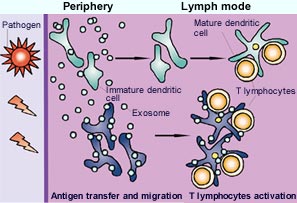Articles and reports from the Life Sciences and chemistry area deal with applied and basic research into modern biology, chemistry and human medicine.
Valuable information can be found on a range of life sciences fields including bacteriology, biochemistry, bionics, bioinformatics, biophysics, biotechnology, genetics, geobotany, human biology, marine biology, microbiology, molecular biology, cellular biology, zoology, bioinorganic chemistry, microchemistry and environmental chemistry.

Molekularabdrucke in Polymermaterialien als Reaktionsgefäße für die Pharmaforschung
Materialien mit winzigsten Hohlräumen, die andere Moleküle als “Gäste” aufnehmen können, spielen eine bedeutende Rolle in Wissenschaft und Technik. Ein besonders interessantes Verfahren zur Herstellung von Materialien mit passgenau zugeschnittenen Hohlräumen ist das so genannte “Molecular Imprinting”. Die als spätere Gäste vorgesehenen Moleküle werden dabei als Schablone eingesetzt: In ihrer Gegenwart

Ein Verfahren zur schnelleren Analyse von Wasserverschmutzung hat die australische Griffith University in Zusammenarbeit mit der Lincoln University in Neuseeland entwickelt. Organische Verschmutzungen können jetzt innerhalb einer Stunde nachgewiesen werden.
Bei der alten und bei der neuen Methode wird die organische Verschmutzung anhand des biochemischen Sauerstoffbedarfs in einer Wasserprobe gemessen. “Das bisherige Messverfahren dauert aber fünf Tage”, sagt Dr. Richard John vom Institut f

Exosomes are minute, natural membrane vesicles secreted by various types of cells of the immune system. They are of enormous interest to oncologists, who are now using them in clinical trials as tumor-antigen bearers to trigger tumor rejection by the body.
On the basis of studies in vitro and in mice, INSERM doctors and research scientists at the Institut Curie proposed a novel mode of functioning of exosomes in the December 2002 issue of Nature Immunology. It seems that exosomes can indire

Using computer models and experiments, researchers at the University of California, Davis, have identified the neurons and connections that are necessary for crayfish to swim.
“We can now pin down the essential components of the circuit,” said Brian Mulloney, a professor of neurobiology, physiology and behavior at UC Davis.
The nervous system controlling locomotion is highly tuned and very stable across different groups of animals, Mulloney said. That makes crayfish a good model

The first outbreak of the evolution of multicellular organisms falls on the Wend, the last period of the Proterozoic (Precambrian), about 620-550 million years ago. At that time, climate of our planet was rather cold, and glaciers that covered the single supercontinent nearly reached the equator. The cold is beneficial for the evolution of sea creatures.
In modern seas, significant concentrations of dissolved oxygen, phosphates, and the organic matter provide for a high biological productiv

The Johns Hopkins scientists who first discovered that knocking out a particular muscle gene results in “mighty mice” now report that it also softens the effects of a genetic mutation that causes muscular dystrophy.
The findings, scheduled for the December issue of the Annals of Neurology and currently online, build support for the idea that blocking the activity of that gene, known as myostatin, may one day help treat humans with degenerative muscle diseases.
Working with mice ca